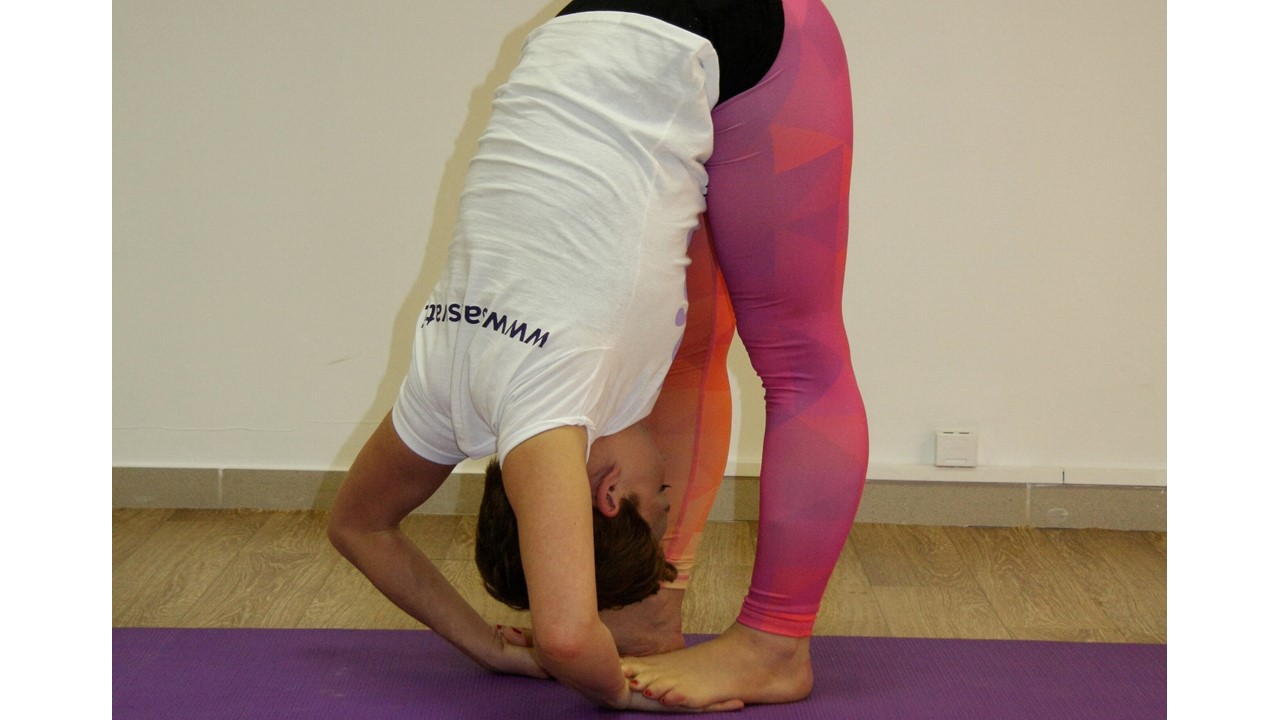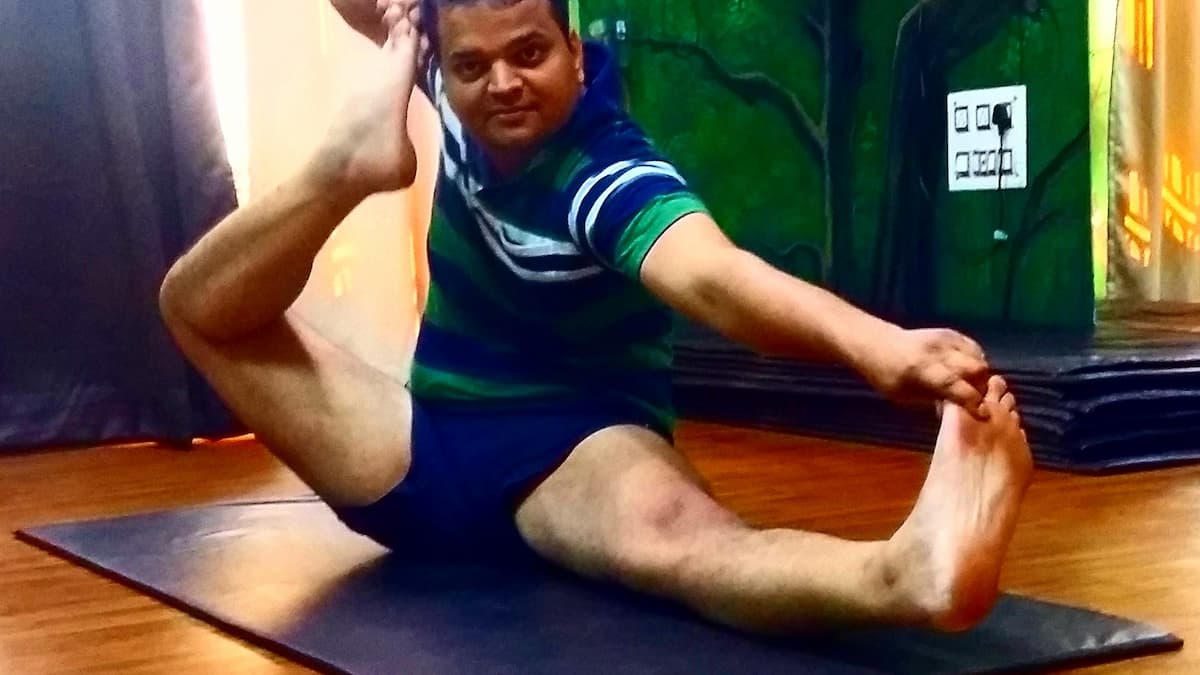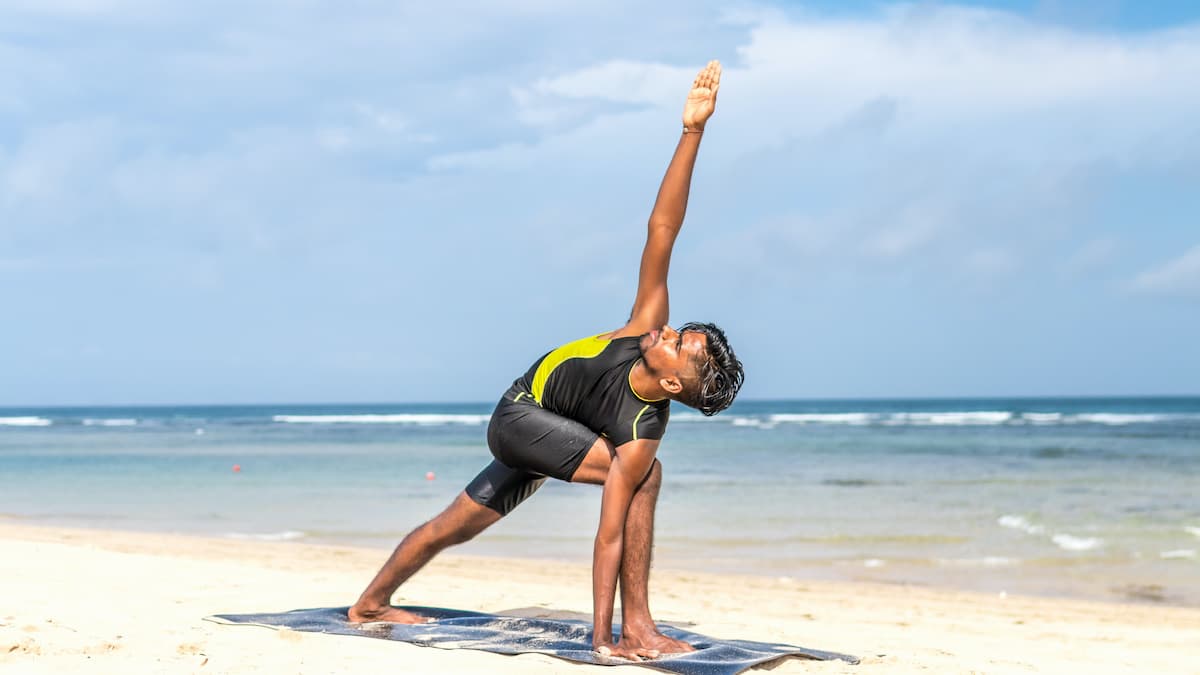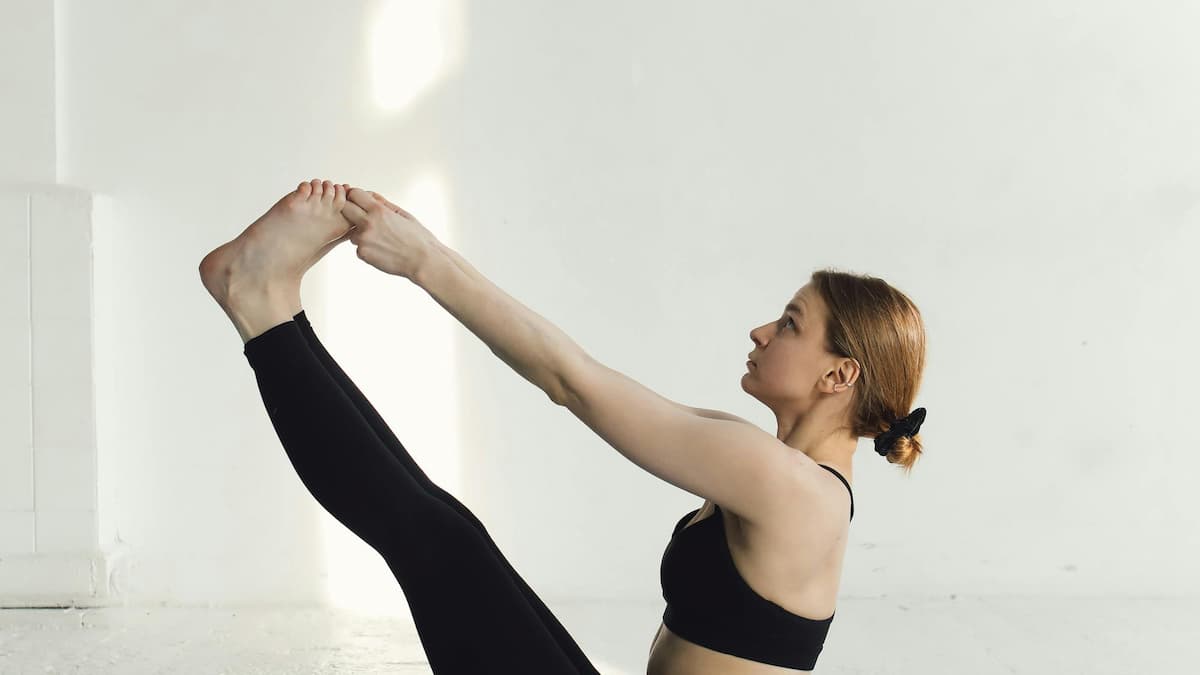Introduction
Pada Hastasana is a standing forward bend. We call it a modern yoga posture since the medieval yoga texts did not mention it. However, the posture has a place in all modern styles of yoga. Hence it might have been in practice traditionally for a long time without any documentation.
This yoga posture is a variant of Uttanasana. In the latter, we place the palms on the floor; whereas, in the former we insert the palms under the feet.
Pada Hastasana Information
| Pose Name | Pada Hastasana |
| Sanskrit | पाद हस्तासन |
| IAST | pāda hastāsana |
| English Name | Hand To Foot Pose |
| Difficulty Level | Intermediate |
| Origin | Traditional |
| Group | Uttanasana |
| Type | Standing Forward Bend |
Pada Hastasana Meaning
पाद (pāda) in Sanskrit means foot. हस्त (hastā) means handheld and आसन (āsana) is a yoga posture. Therefore it may be better understood as Handheld Foot Pose. Also, most people like to call Hand To Foot Pose.
Pada Hastasana Procedure
Precautions and Contraindications
Pregnant ladies should not attempt this posture since this being the forward bend. Moreover, people having health conditions like high blood pressure, abdominal hernia, Sciatica pain, Sacral and lumbar issues should avoid this pose.
Furthermore, one should practice this posture on empty stomach.
Preparatory Poses
A proficiency and practice to the following poses will help master this posture.
Pada Hastasana Steps
Step 1
Stand upright with feet together. Take a couple deep breaths.
Step 2
Then raise both hands up and bend forward exhaling. Ensure that the lower part of the body below the hips should be straight and vertical.
Step 3
Place the fingers underneath the soles or toes. The forehead should touch the knees. If it is not possible, it should be as closer as possible.
Step 4
This is the final position. Breath normally. Keep the position as long as possible. To release the pose, come back to the standing position inhaling.
Duration
The duration in the final position should be four to five minutes. For beginners, this may not be possible. Hence they may go for multiple rounds to reach the total duration target.
Follow Up Poses
It is mandatory to follow up with any one of the following back-bending yoga postures.
Pada Hastasana Benefits
The benefits of Hand to Foot Pose are as follows.
Reduces Belly Fat
Regular practice of this posture helps to maintain the ideal weight. It burns out the excess fat stored in the lower abdomen region.
Improves Spine Health
It stretches and strengthens the supporting muscles of the back and spine. It tones up the paraspinal muscles, multifidus muscles, and rectus abdominis muscles. Thus, it stabilizes the spine and improves the health and flexibility of joints and ligaments.
Improves Hamstring Muscle Flexibility
The modern young population is subject to a dentary lifestyle and this can lead to hamstring tightness. As a result, it affects the strength, flexibility, and endurance of the said muscles. A recent study on Pada Hastasana concludes that it improves the flexibility of the hamstring muscles. This study recommends this posture as the treatment technique for the flexibility of the said muscles.
Boosts Digestive Functions
It tones up the digestive organs. Thus it removes flatulence, constipation, and indigestion. It stimulates the appetite.
Increased Circulation to Brain
The inverted pose increases circulation to the brain, pituitary, and thyroid glands. As a result, it gives improved concentration and metabolism. It also decreases diseases of the nose and throat.



